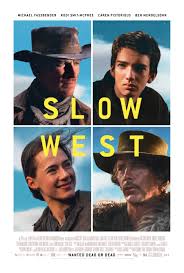 I feel like one of those angry male fanboys complaining about “accuracy” and being “faithful” to source material. While Ready Player One maintains most of the plot points of Ernest Cline’s novel, it often feels like a completely different story. Masturbatory and overwritten though it may be, the book Ready Player One at least took its fandom seriously. Steven Spielberg’s film adaptation is a sugary pop culture smorgasboard. It’s empty, overstuffed and bland where it should be awe-inspiring. And instead of a virtual reality world filled with wonder, Spielberg’s latest vision of the future looks corny even for him.
I feel like one of those angry male fanboys complaining about “accuracy” and being “faithful” to source material. While Ready Player One maintains most of the plot points of Ernest Cline’s novel, it often feels like a completely different story. Masturbatory and overwritten though it may be, the book Ready Player One at least took its fandom seriously. Steven Spielberg’s film adaptation is a sugary pop culture smorgasboard. It’s empty, overstuffed and bland where it should be awe-inspiring. And instead of a virtual reality world filled with wonder, Spielberg’s latest vision of the future looks corny even for him.
Ready Player One has been the subject of a lot of backlash, much of it deserved. Cline’s adventurous sci-fi novel celebrates ‘80s pop culture but does so trivially. And in the process it overlooks art made by and for women and champions insular, nerdy dudes who view the whole world as a video game and have become the model for hateful trolls on the Internet.
If Spielberg’s movie were half as problematic it might be interesting. It cheapens the Willy Wonka sense of discovery you got from reading the book and simplifies the idea of the OASIS, an infinite, game-like universe to “a place where you can climb Mt. Everest…with Batman!” Cline’s book isn’t celebrated for his prose, but even he never wrote a line that bad (he’s a co-screenwriter on the film). And better luck next time to any tech guys who thought this movie might put VR headsets on the map. For every remarkable thing that happens in the OASIS, Spielberg can’t help but cut back to someone in the real world looking like a total dweeb. Continue reading “Ready Player One”


 The paradox of “Rogue One: A Star Wars Story” is that it’s somehow tonally and thematically separate from the original “Star Wars” films but pays even more homage to the original trilogy than even “The Force Awakens,” amazing, since that movie is essentially a remake of “A New Hope.”
The paradox of “Rogue One: A Star Wars Story” is that it’s somehow tonally and thematically separate from the original “Star Wars” films but pays even more homage to the original trilogy than even “The Force Awakens,” amazing, since that movie is essentially a remake of “A New Hope.” Lying on the ground in the Old West, a naïve boy and a grizzled bounty hunter look up to the moon and constellations in the night sky. The boy cocks his fingers into a gun and shoots holes in the heavens, and the bounty hunter says that when we finally get to the moon, the first thing we’re likely to do is kill all the natives that live there. Even space is a reflection of their bleak reality.
Lying on the ground in the Old West, a naïve boy and a grizzled bounty hunter look up to the moon and constellations in the night sky. The boy cocks his fingers into a gun and shoots holes in the heavens, and the bounty hunter says that when we finally get to the moon, the first thing we’re likely to do is kill all the natives that live there. Even space is a reflection of their bleak reality.